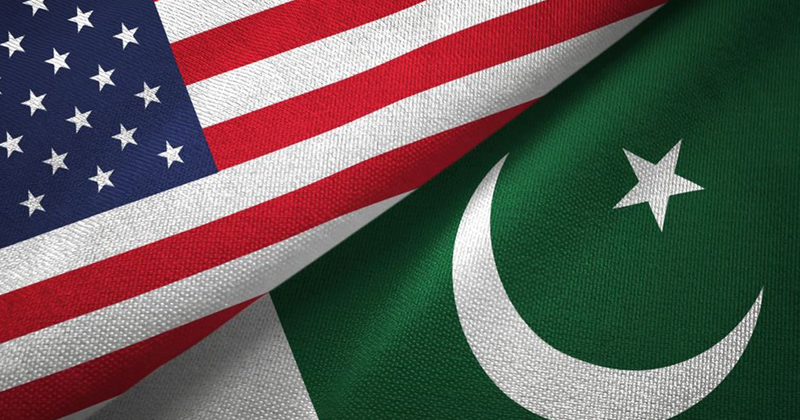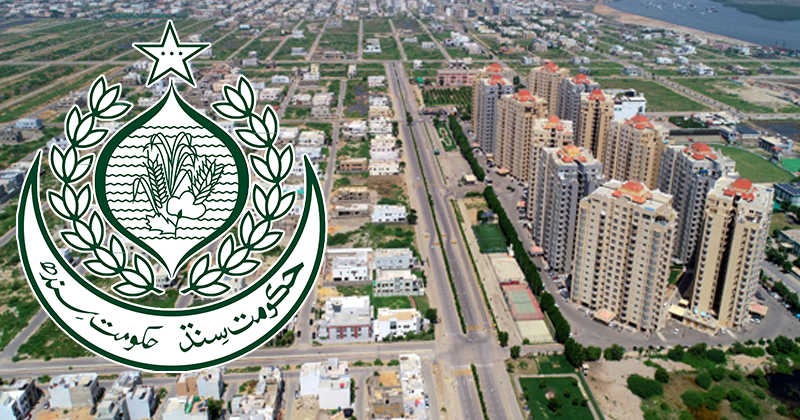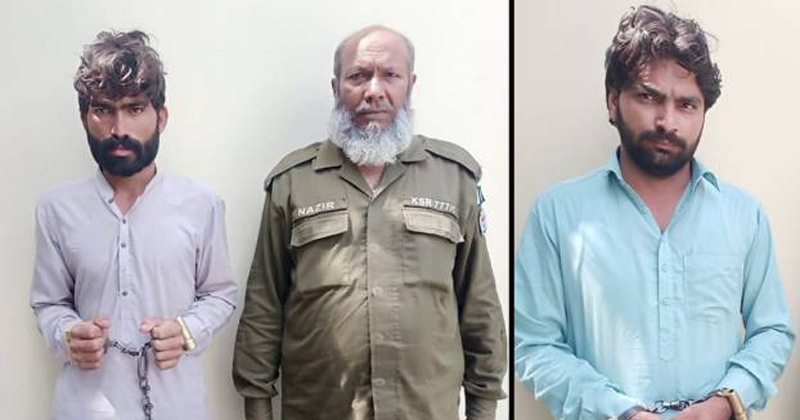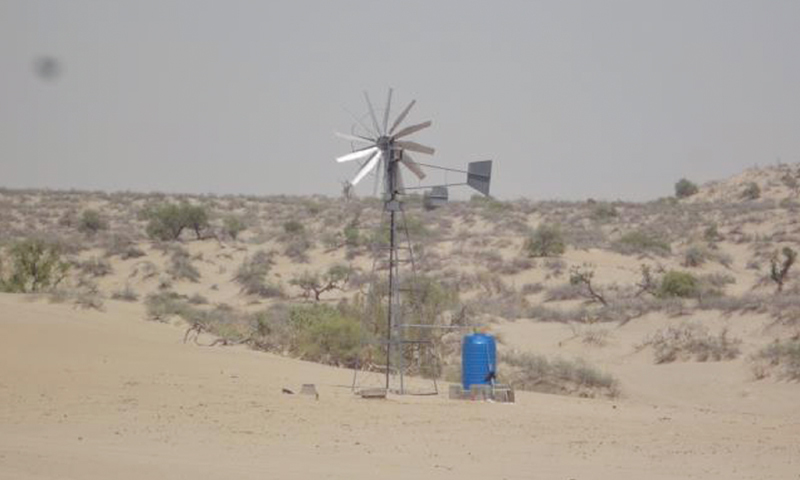
Sun, heat, sand, poverty … women in vibrant coloured dresses walking long distances in search of water; these are the images that are conjured when most people think of Thar. Now, the twin spectres of death and malnutrition have been added to this imagery.
Thar has been in the limelight for the past few months in the wake of the death of over 350 children caused by malnutrition and food and water scarcity, which has opened a new debate about developmental issues.
No doubt, the crisis has a direct link to the lopsided economic and development polices of the successive governments which have always focused on development of cities and ignored far flung arid regions. While most of the rural hinterland has river water and soil for tilling, Thar is an arid region where the people only depend on rain for water, and thus for food and fodder. A lack of rain means a famine-like situation.
The absence of even basic facilities has made Tharis dependent on nature and on spiritual ‘healers’ like Pir Saeen Pagaro and Makhdoom Shah Mehmood Qureshi. If the people have access to basic necessities of life it would help them to come out of the vicious cycle of dependence that they have been living under for generations and the miserable lifestyle that they have accepted as their destiny.
Simple interventions like road network and the provision of water will have beneficial effects on the lives of the people of Thar
The situation is so complicated that even experts fail to understand from where the government should start development work — the people are missing out on all basic necessities of life like water, food, healthcare, education and road infrastructure. Let’s start with that last one:
The road to progress
Development experts believe that a road network is essential for connecting the area with other parts of the country. While the southern strip of the desert in Umerkot and Tharparker districts has some road network and is accessible from Mirpurkhas and Badin districts, Achhro Thar (White Desert) in Sanghar district has remained underdeveloped because there are no roads at all. Situated along Sindh’s border with India, Achhro Thar can be defined as one of the most underdeveloped and inaccessible areas in the country.
Development experts stress the need for constructing a road from Khipro up to the border with India. At present most of the dates produced in Khairpur and Sukkur are exported to India through the Wagah border, despite the fact that Jaisalmer is the nearest city in India from Sindh. Trade opening with India from a border point somewhere in Achhro Thar will greatly benefit the area.
The road from Badin to Mithi and then to Nagarparkar — constructed during the Arbab Rahim government (2004-2007) — made it easy for NGOs to carry out welfare work in Tharparkar district. “We’ve installed 23 water pumping windmills near the wells used by villagers. The cost for moving machinery from cities to villages doubled because of lack of proper roads,” says Suleman Abro of Sindh Agricultural and Forestry Workers Coordinating Organisation (Safwco).
“Our intervention is limited and focused. We’ve worked in the fields of water and health with the cooperation of Hurr Jamaat because people in the area are followers of Pir Saeen Pagaro,” says Mr Abro. “When the aid dries up we stop working. It’s the government’s responsibility to lay the basic infrastructure but unfortunately, the government and parliamentarians from the area are not paying attention to the area. Under Article 38-A of the Constitution, the people must be provided facilities like health, education, livelihood, shelter, etc, without discrimination. Unfortunately, the people living in the remote rural areas as well as low profile urban areas are not getting their constitutional rights,” he says.
The problem with the Thari society is that it has become stagnant and immobile. They only leave their area when there are no rains and animals start falling sick due to lack of water and food. The road construction will give them access to markets where they can sell products they make from wool. Thari women are very good at making rugs from sheep and goat wool, in addition to rallis and embroidered clothes. Now they sell such precious things to the middlemen who earn lots of money by selling their handicraft in the market. If their handicrafts are promoted and they are granted direct access to markets in cities, it can become a good source of income for them and lessen their economic woes.
In addition to that connectivity would also increase Thari people’s interaction with developed areas and empower them politically.
In the absence of a hospital in the entire Achhro Thar area, the construction of a road would make it easier for the people to move patients to nearby towns such as Khipro. One of the villagers told Dawn that at present it takes days to reach a nearby town; if someone is bitten by a snake “we usually arrange for a coffin when the patient is sent for medical aid as in most of the cases they die before getting any treatment.”
Teach a man to fish...
Connectivity and road access is not the only problem plaguing Thar. The depletion of already scarce resources has devastated human settlements and compels a large number of people of Thar to migrate to other areas in search of water and food during the dry period. The yearly cycle of migration can be stopped with the creation of income opportunities in the area. “There is much talk of drought and vulnerabilities in Kacho, Kohistan and Achhro Thar. But since Achhro Thar has not received much attention from the media, the common people do not have much information about this most marginalised part of the province. The White Desert of Sindh has its own unique socio-cultural, economic and political landscape,” says civil society activist Zulfiqar Halepoto. “There is a need for an integrated development strategy for the arid zone of Sindh and in this regard we are starting our work from Achro Thar,” he said.
It’s not that Thar is absolutely dry. There is ground water in Thar, but it is saline, which makes cultivation impossible. This water can be purified and made potable after desalination.
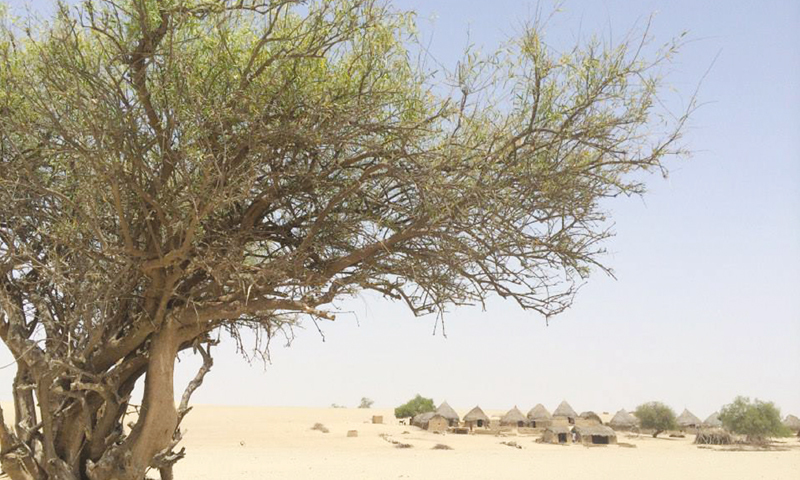
Though desalination has been successfully used since the 18th century, Akhter Iqbal Zuberi, a resident of Karachi, invented a towered desalination plant in 1993, which uses solar energy and distils water faster than other methods in use elsewhere in the world.
He told Dawn that the Sindh government is funding reverse osmosis plants in Thar which are costly and need electricity for operation, while towered solar desalination plants, constructed with cement and glass, are feasible for arid areas like Thar because such a plant does not require electricity and there is minimal maintenance cost. The plant can be operated by an unskilled man, is cost-effective and can be constructed in remote villages. Due to its low construction cost and dependence on solar energy it is quite affordable for a country like Pakistan where we cannot afford expensive fuel.
Zuberi says that “This plant is the most productive desalination plant developed anywhere. This invention needs government’s attention. It can also help the people of Thar and Cholistan where there is a need to desalinate ground and saline water through affordable method.”
Zuberi’s plant won an award from Energy Globe Foundation in 2013.
Besides desalination of ground water, another way to meet the water requirement is rainwater harvesting. Tharis have been harvesting rainwater since time immemorial, but there is a need to modernise this system to overcome water scarcity when there are no rains. Some of the villagers say that they need plastic sheets to spread around the ponds to stop water seepage. The other method is to construct cemented walls, but this would be too costly and the poor people can’t afford it.
Besides road network and water scarcity, the people of Thar lack education opportunities as well. Most of the schools in the region are closed. According to Safwco, the literacy rate in Sanghar district is 30.9 per cent. The exact figures for Achhro Thar, where there are only a few schools, are not available; here female literacy might be zero. When the people are uneducated and unskilled they have no choice but to continue with their ancestral occupations. Most of the people are herdsmen and they don’t want to leave their areas. They do come to the barrage areas only when there are no rains and go back to Thar when grass is in abundance after rains.
Published in Dawn, Sunday Magazine, June 1st, 2014
This design was given the Energy Globe Foundation Award in 2013.
It filters saline water, which is very effective on the coastal line, remote areas of Pakistan. Dams are important to store water but this invention is the best solution for remote areas.
https://t.co/W0X6VFkrYD?amp=1
https://www.dawn.com/news/1109134

















